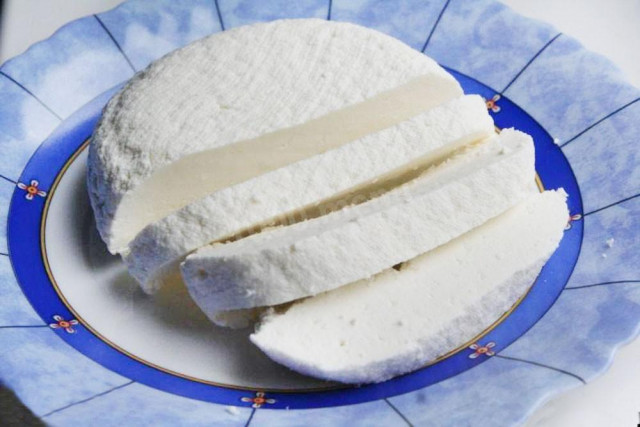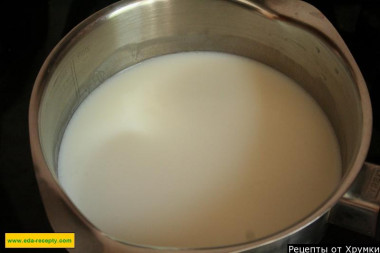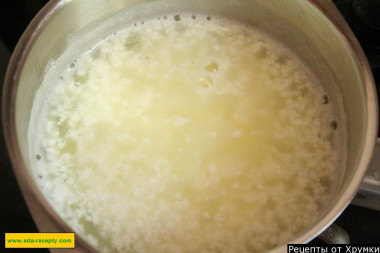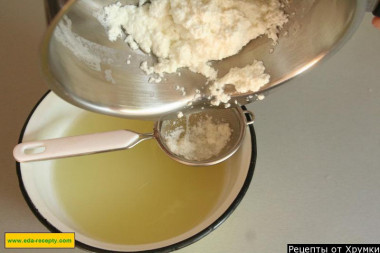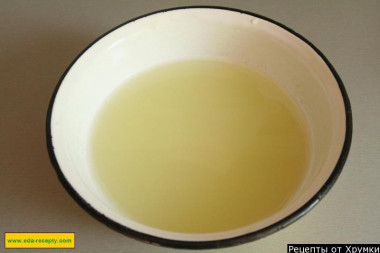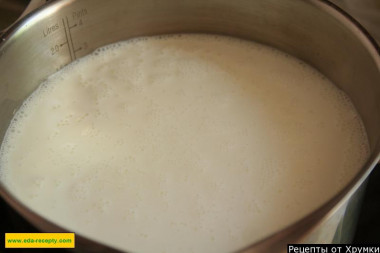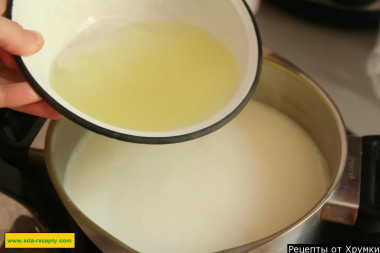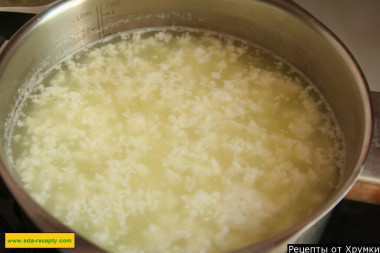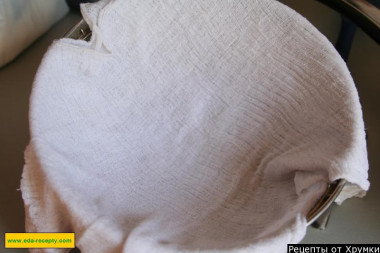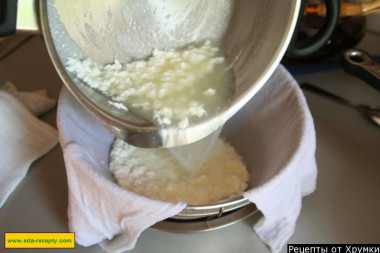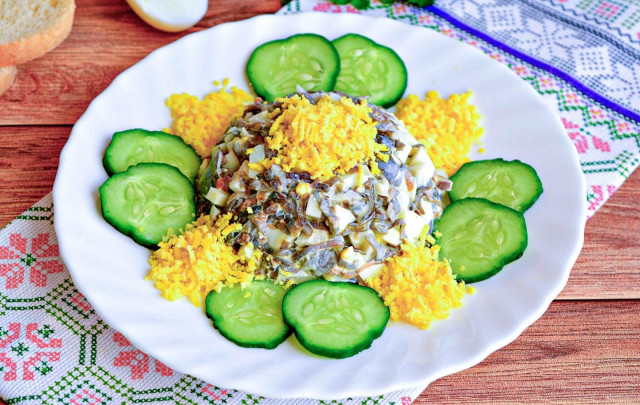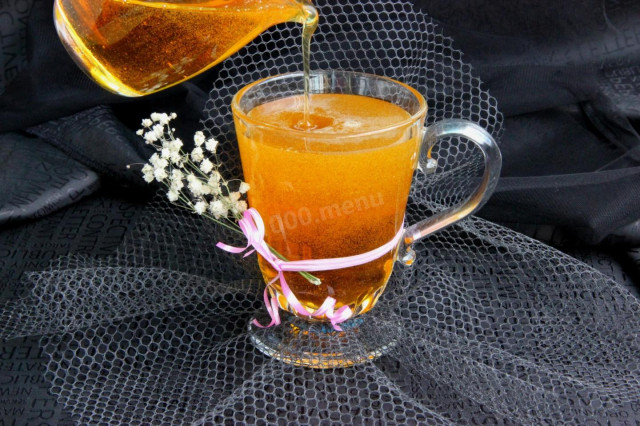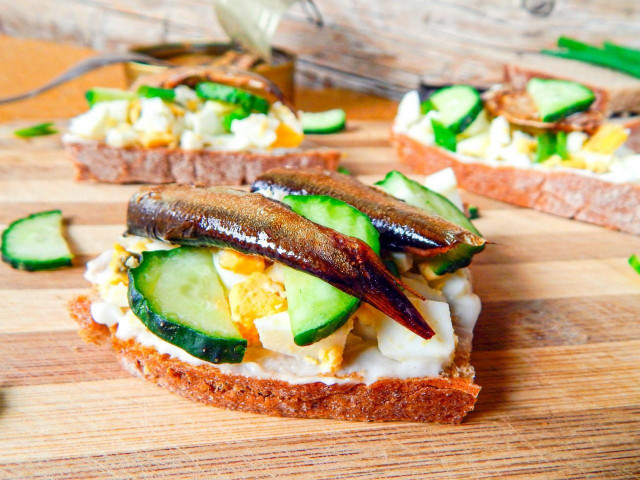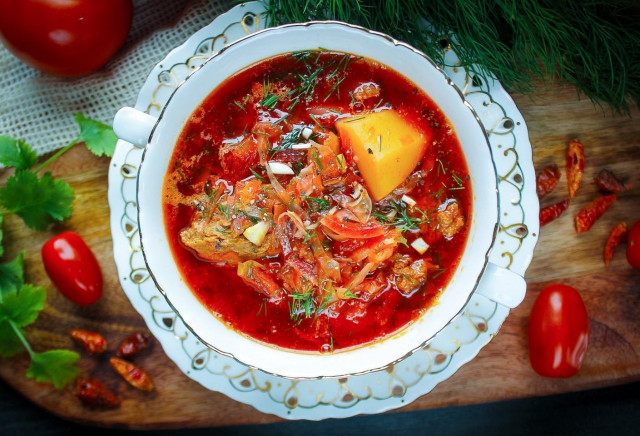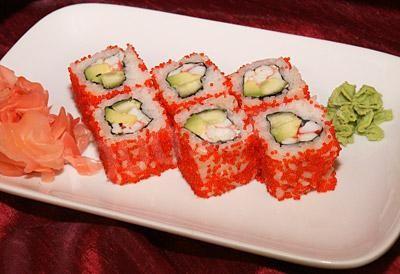Composition / ingredients
Step-by-step cooking
Step 1:
How to make adygeisic cheese at home? Prepare the necessary products. Please note that you will need milk only after two days, when the whey will be prepared. Therefore, it is worth considering its shelf life.
Step 2:
Start making cheese by pouring kefir into a saucepan and putting it on fire.
Step 3:
During heating, kefir will begin to curdle, the whey will separate from the cottage cheese. This process will take about five minutes.
Step 4:
Drain the serum into a separate container. You won't need cottage cheese, you can eat it with sugar or jam or use it for cooking other dishes.
Step 5:
Leave the serum to sour for two days at room temperature.
Step 6:
Then take the prepared milk, pour it into a saucepan and bring to a boil.
Step 7:
Make a small fire on the stove. Carefully pour the sour whey into the hot milk.
Step 8:
Milk will start to curdle. After about 7 minutes, the cheese will float up, separating from the whey.
Step 9:
Take a clean saucepan, at the bottom of which lay out a clean gauze folded in several layers.
Step 10:
Carefully pour the resulting mass into a saucepan with gauze - the whey will leak into the pan, and the curd mass will linger in the gauze. Add salt on top of it, if desired, add spices to taste. Stir, and then tie the gauze and hang it over the sink to drain the excess liquid. When most of the whey has drained, it will be possible to shape the cheese. To do this, twist the cheese head tightly into cheesecloth, trying to make fewer folds, and squeeze it easily.
Step 11:
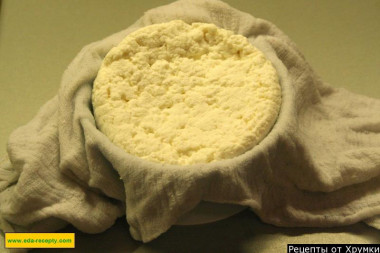
Put the cheese head directly in the cheesecloth in a colander mounted on a saucepan, put a flat saucer on top and press down with a press, for example, a jar of water. Place the cheese in the refrigerator together with the press. The next day, the cheese will be ready for use, during this time the excess whey will come out and the head will seal well. Enjoy your appetite!
Adyghe cheese has a delicate and slightly dense consistency. Among its analogues can be noted cheese, ricotta, feta and mozzarella. It belongs to the national dishes of Circassian cuisine. It is customary to prepare it from cow's milk, but it can also be based on the milk of goats or sheep. For culinary purposes, this cheese has found quite a wide application. It can be eaten as an independent dish, or added to first courses, unsweetened pastries, vegetable salads, various snacks, etc. In addition, this product is perfectly combined with fruits, vegetables, herbs, pasta. You can even just fry it in butter - it will turn out very tasty.
Since the degree of salinity, sweetness, bitterness, sharpness, acid, burning is individual for everyone, always add spices, spices and seasonings, focusing on your taste! If you put some of the seasonings for the first time, then keep in mind that there are spices that it is especially important not to shift (for example, chili pepper).
How to choose the perfect pot for different dishes read the article about pots.
Caloric content of the products possible in the composition of the dish
- Whole cow's milk - 68 kcal/100g
- Milk 3.5% fat content - 64 kcal/100g
- Milk 3.2% fat content - 60 kcal/100g
- Milk 1.5% fat content - 47 kcal/100g
- Concentrated milk 7.5% fat content - 140 kcal/100g
- Milk 2.5% fat content - 54 kcal/100g
- Kefir fat - 62 kcal/100g
- Kefir of 1% fat content - 38 kcal/100g
- Low-fat kefir - 30 kcal/100g
- Kefir "doctor beefy" 1,8% fat content - 45 kcal/100g
- Kefir 2.5% fat content - 53 kcal/100g
- Salt - 0 kcal/100g

